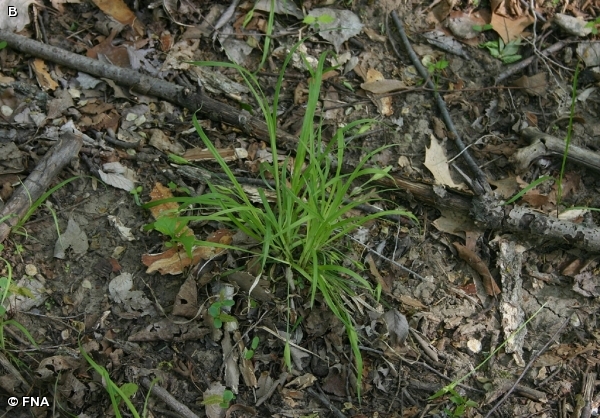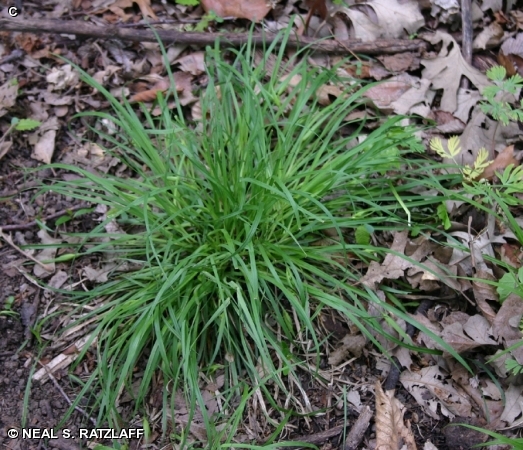
Bunched perennial with flowering stems to 14 inches tall that are usually shorter than the often bluish-green leaves (C). Each flowering stem has single male and female spikes at the tip. Additional lower spikes, if present, are basal and on short peduncles. The very short central male spike does not rise above the female spike composed of 2-6 perigynia which surround its base (A). Arising just below the perigynia are 2 leaflike bracts which completely envelop the spikes, hiding them from view (D,E,F).
Upland woods; moist to dry sites. Rocky Mountain Sedge is at the southern edge of its range at FF/NW. It is rare on southern Oak Trail in Fontenelle Forest and uncommon at Neale Woods with only a few plants at scattered upland sites including Neale Trail just above River Road. Flowering occurs in very late April or early May.
James’ sedge (Carex jamesii) also has two prominent bracts at the base of the male and female spikes, but they are narrower and do not conceal them. Its deep green leaves and upright flower stems differ from Rocky Mountain Sedge which has arching or drooping stems and leaves with a distinct bluish-green cast. James’ Sedge also prefers moister sites than Rocky Mountain Sedge which is found only on drier upland slopes at FF/NW. James’ Sedge also occurs in the uplands, but in moister, less exposed sites and it is the only one found on the floodplain.
The content of NatureSearch is provided by dedicated volunteer Naturalists of Fontenelle Forest who strive to provide the most accurate information available. Contributors of the images retain their copyrights. The point of contact for this page is: Neal Ratzlaff.





